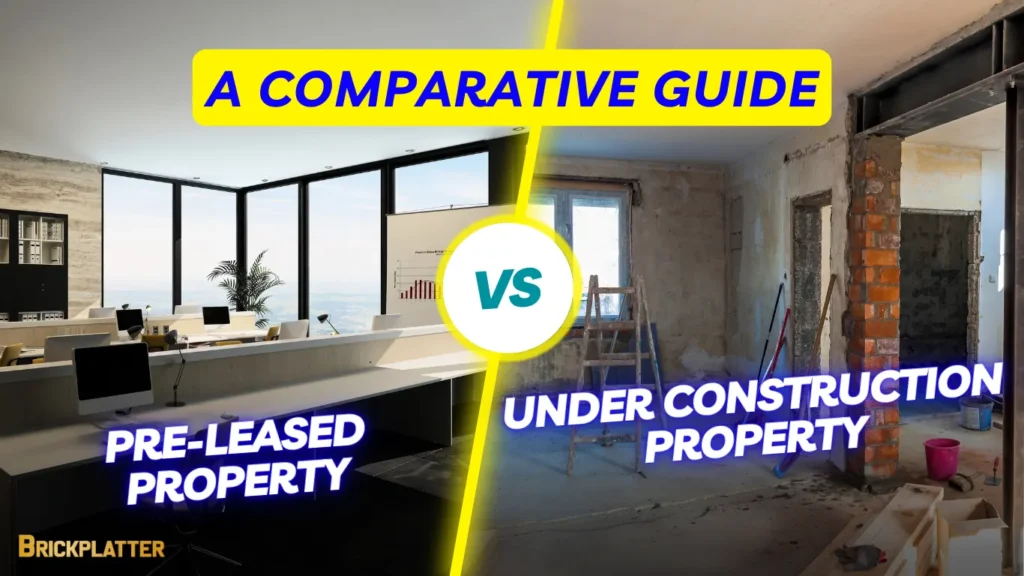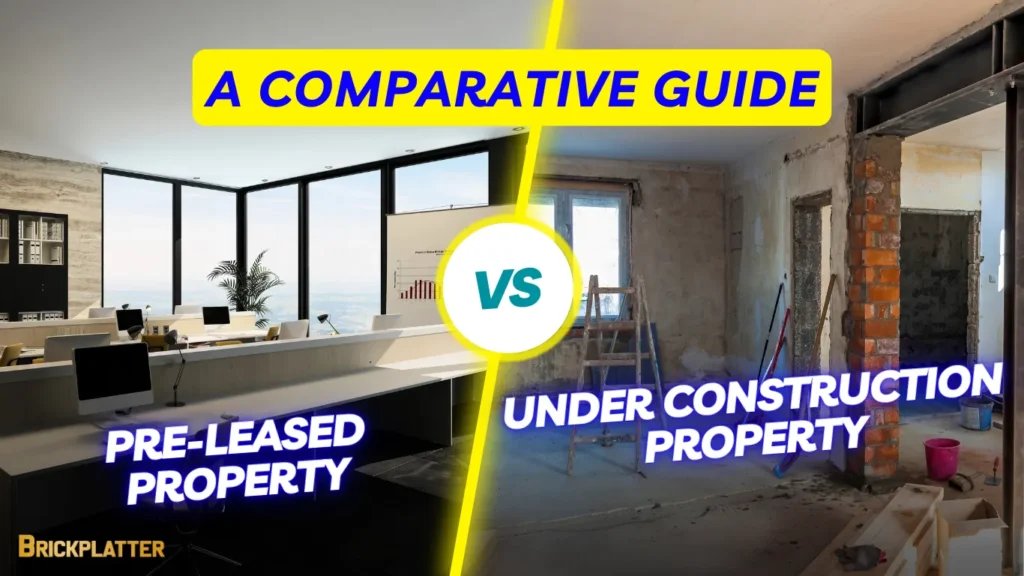
Real estate investment has evolved from just buying a flat or a piece of land into a more diversified and strategic process. Today, savvy investors are not only looking for returns, but also for stability, predictability, and smart timing. Two popular options in this context are pre-leased commercial properties and under-construction properties.
But how do you choose between the two?
What are the risks, benefits, and returns involved?
In this guide, we’ll unpack the major differences, use-cases, and help you understand which option fits your investment style better.
What is a Pre-Leased Property?
A pre-leased property is one that already has a tenant occupying the space under a rental agreement. In essence, you’re buying a property that’s already generating income from day one. These are typically commercial spaces leased to corporate tenants like banks, retail chains, or MNCs.
Key Features:
- Tenant already in place
- Rental income begins immediately
- Lease terms are fixed (typically 3–9 years)
- Can offer long-term capital appreciation
What is an Under-Construction Property?
An under-construction property is still in the development phase and not yet ready for occupancy. These are usually residential or commercial units that will become rentable or sellable upon completion.
Key Features:
- No immediate income; returns start after possession
- Typically available at lower entry prices
- High potential for capital appreciation
- Subject to construction delays or regulatory risks
Table of Contents
TogglePre-Leased vs Under-Construction: Head-to-Head
Criteria | Pre-Leased Property | Under-Construction Property |
Income Generation | Immediate rental income | No income until completion |
Risk Factor | Low – tenant already in place | High – construction, regulatory, and market risks |
Capital Appreciation | Moderate, steady growth | Potentially high, but speculative |
Liquidity | Relatively high – income-attracting asset | Lower – harder to exit pre-possession |
Management Effort | Low – leases are long-term | Moderate to high – needs monitoring during construction |
Tax Benefits | Rental income taxable under ‘Income from House Property’ | No income tax until possession |
Suitable For | Income-focused, low-risk investors | Growth-focused, higher-risk investors |
Investment Strategy: Which One Should You Pick?
✅ Choose Pre-Leased Property If You:
- Want passive income from day one
- Prefer lower risk and a stable tenant
- Are looking for long-term asset stability
- Need collateral for loans (banks prefer income-generating assets)
✅ Choose Under-Construction Property If You:
- Are aiming for high capital appreciation
- Have a longer investment horizon
- Can tolerate delays and short-term volatility
- Want to buy low and sell high (price often increases post-completion)
Real Use-Case from BrickPlatter
At BrickPlatter, we’ve seen investors use hybrid strategies. For example, a user might invest 70% of their funds into pre-leased commercial spaces through SPVs for immediate returns, while putting the remaining 30% into under-construction assets with high future value potential.
This blended approach balances risk and return, making your real estate portfolio both resilient and growth-ready.
Final Thoughts
There’s no one-size-fits-all answer. Both pre-leased and under-construction properties have their merits—it all depends on your financial goals, risk appetite, and investment timeline.
At BrickPlatter, our goal is to help you diversify smartly, invest securely, and grow confidently. Whether you’re looking for monthly income or long-term appreciation, we offer curated real estate opportunities through fractional ownership of high-potential SPVs.
Ready to Invest Smarter?
Explore our latest pre-leased and under-construction opportunities on BrickPlatter.com and take your portfolio to the next level.


